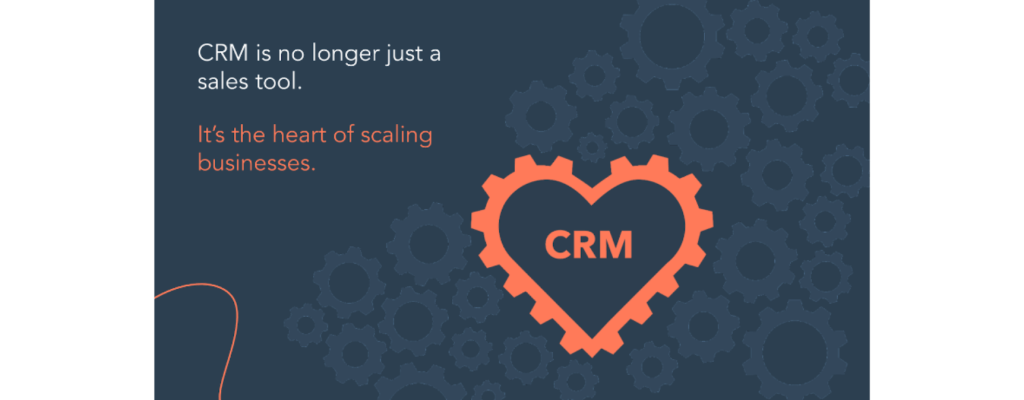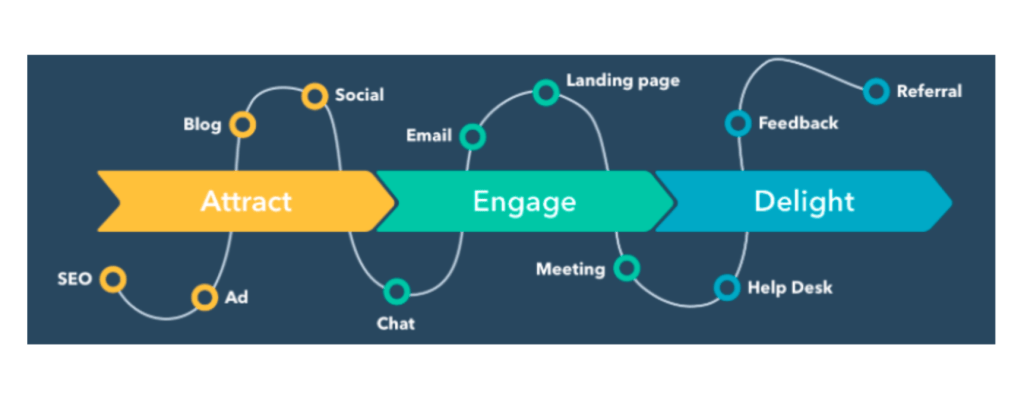This article delves into the strategic significance of integrating CRM (Customer Relationship Management) with your marketing efforts. We will explore effective data management, emerging marketing strategies, and the obsolescence of traditional marketing tactics.
We’ll also spotlight the concept of experience-driven marketing and the drawbacks of outdated practices. Additionally, we’ll discuss the art of personalization in marketing, along with the key strategies for CRM success: segmentation, contextualization, and personalization.
In essence, CRM is the cornerstone of your marketing strategy, and maintaining pristine CRM data is pivotal for achieving marketing success. So, let’s embark on this journey of CRM transformation together.
The Data Treasure Trove
In today’s business landscape, a Customer Relationship Management (CRM) system is not just a basic requirement but a fundamental necessity. However, it’s crucial to understand that a CRM isn’t merely a digital repository for your data; rather, it serves as a gateway to unlock the untapped potential within your customer information.
Efficient collection, organization, and utilization of data is crucial, with minimal maintenance required. For example, having a list of names of prospects interested in your company over the past eighteen months can be useful. It’s even more powerful to identify who is browsing, who is ready to make a purchase, and who meets multiple criteria essential for closing deals.
By gaining deeper insights into your data and using strategic methods, you can ensure your messaging reaches the right audience at the right time without intrusive or labor-intensive processes. Modern targeting strategies have evolved to the point where advertisements are informative rather than intrusive. As a result, we often take the quality of ads in our social media feeds and online videos for granted. Outdated approaches no longer work in contemporary digital marketing.
The Outdated Approaches No Longer Work
Contemporary digital marketing has evolved considerably since its inception two decades ago. Factors like GDPR regulations, privacy concerns, savvy buyers, and major corporations like Apple redefining data mining have all left a significant mark on the industry.
Are these practices familiar to you?
- Purchasing data lists
- Sending mass emails with misspelled names
- Initiating cold calls without consent
- Sending spam SMS messages from random numbers
Chances are you’ve encountered some of these practices recently. We’re not referring to the occasional “Hi {first name}” greeting error that marketers dread. Instead, we’re talking about data-scraping, privacy-violating, and industry-discrediting methods that have tarnished the reputation of many. It’s worth noting that some companies still employ these outdated tactics.
But why persist with these approaches?
Is it due to malicious intent, greed, or indifference?
In most cases, none of the above apply. It’s often the opposite. Many companies are so eager to broadcast their message that they overlook the blend of science and artistry required to craft effective marketing. They forget that they possess a treasure trove of prospect data, offering profound insights into behavior, preferences, and desires.
Introducing the Customer Relationship Management (CRM) System

A CRM system is a repository of customer data. It can range from a simple spreadsheet to a sophisticated AI-driven source of truth that continuously evolves. When used correctly, a CRM system has the power to increase revenue and attract, engage, and delight prospects and customers at every stage, and it continuously evolves.
Why You Should Harness Your CRM for Experience-Driven Marketing
Today’s successful marketers place a strong emphasis on the customer experience. Experience-driven marketing centers on prioritizing the needs and preferences of your prospects in every aspect of your marketing efforts.
This approach is exemplified by HubSpot’s adoption of the flywheel model. When your focus is on the customer experience, marketing feeds into sales, sales feeds into service, and service, in turn, delights customers, creating a continuous cycle. This virtuous circle is only achievable when the customer is at the core of your strategy, managed effectively through a CRM system.

Leveraging your CRM is the key to unlocking the potential of experience-driven marketing. It’s not just a trendy buzzword; it’s the secret to your company’s growth. According to Forrester Research, companies prioritizing customer experience grow 40% faster and increase customer lifetime value by over 60% compared to those that don’t.
Few marketers have fully integrated all their tools and tactics into a CRM, often resulting in fragmented customer experiences, siloed data, and an inability to measure effectiveness accurately.
This is why HubSpot has spent significant effort in seamlessly integrating HubSpot’s Marketing Hub with the CRM system. This integration unifies the buyer experience, enabling personalized interactions and success measurement across all channels.
A CRM Empowers Personalized Marketing Offers
Anchoring your marketing efforts in a CRM enables you to create personalized experiences across every communication channel. Personalization remains the holy grail of delivering exceptional experiences, especially in today’s hyper-competitive landscape. The more you tailor your messaging to prospect preferences, the greater your chances of grabbing your audience’s attention.
In today’s world, personalization goes beyond just using a person’s name in a message. It involves delivering relevant messages promptly and using appropriate language, tone, and subject lines. While receiving a personalized message is nice, it’s easy to spot automated messages.
That’s why effective personalization is all about sending tailored messages that address specific issues, such as HR management, just before important deadlines, like a company-wide HR software renewal.
Effective personalization is demonstrated in scenarios like this: Suppose you recently started a small business in the last six months and receive a persuasive message from an invoice management software vendor regarding the importance of timely filing tax returns. This level of personalization is achievable through CRM-driven marketing.
Navigating the Three Paths to CRM Success
In the realm of Customer Relationship Management (CRM), success lies in three fundamental strategies: segment, contextualize, and personalize.
Segment
In today’s digital landscape, the average consumer faces a constant barrage of promotional messages, encountering anywhere from 4,000 to 10,000 advertisements daily. Take a moment to recall the last time you leisurely browsed your phone, shopped online, checked social media, or read the news. How many unrelated advertisements have you encountered?
Chances are, you’ve closed at least one webpage this week due to disruptive advertising. Yet, the real peril for marketers is not just disgruntled prospects but apathy—a far more ominous threat.
When prospects fail to perceive your messaging as directly relevant to their lives, they tune out. This is where a CRM becomes indispensable in modern marketing. Understanding your customers enables you to deliver content when they need it, in a way that resonates with them.
The good news? The solution is already in your marketing toolkit—the data within your CRM. From this data, you can segment specific customer groups based on their desires, needs, and readiness to make a purchase.

Use HubSpot Lists for Precision Segmentation
HubSpot offers a powerful tool: lists. Lists allow you to isolate segments within your database based on various data points, from prospect demographics to company affiliation and online activities. These lists can also adapt in real-time to changing data fields.
In just a few minutes, you can generate a list of contacts who are in the third month of their current contract. Could they benefit from a complementary upsell to enhance their existing package? How about targeting prospects who visited your pricing webpage multiple times in the last 30 days with a discount code?
Certainly, the same messaging won’t resonate with both groups. However, with a thoughtful approach, you can provide messaging that addresses their specific needs.
Create Custom Behavioral Events
Harness the power of manually tracked custom behavioral events, allowing you to define and track unique actions specific to your business. These events can be associated with contact properties, enhancing your utilization of HubSpot’s suite of tools. While setting up manually tracked events requires developer expertise, they open doors to more advanced analytics, offering a deeper understanding of the entire customer journey.
Contextualize
Regardless of the product or service, buyers traverse the essential stages of Awareness, Consideration, and Decision.
However, the duration of each stage can vary significantly based on what you offer. A parched individual on a scorching day may swiftly progress from Awareness to Decision to purchase a cold drink. In contrast, a Project Manager evaluating forecasting software for a global SaaS enterprise may take months to make a decision.
Nevertheless, one constant remains: prospects require stage-specific content tailored to their buying journey.
Before a Project Manager even becomes aware of your forecasting software, they must first experience or acknowledge a problem—such as the pain caused by inadequate planning tools. Subsequently, they seek a solution, which may encompass various options, from integrating a new tool to outsourcing the entire predicament.
Implement Buyer’s Journey Campaign Triggers with HubSpot
Crafting content aligned with each stage of the buyer’s journey is essential. Triggering emails and messages for prospects based on their position in the journey ensures that the content resonates with their specific needs. Imagine tailoring content to match the buyer’s journey stages:
- Awareness: A blog post on “Why Project Managers Struggle with Time Management.”
- Consideration: A comprehensive guide on “10 Ways to Enhance Project Management Effectiveness.”
- Decision: A case study showcasing “Why Company X Chose Them to Solve Forecasting Challenges.”
Labeling prospects within your CRM according to their customer journey ensures they receive pertinent messaging that nurtures prospects and enhances conversion rates. Avoid overwhelming prospects with technical data when they’ve only just identified their problem. Instead, deliver well-timed, informative pieces of content—like a trail of breadcrumbs—guiding the prospect toward your product or solution at the right moment.
Utilize HubSpot Smart Content for Contextualization at Scale
HubSpot’s Smart Content empowers you to create dynamic content based on specific rules. Emails, landing pages, and CTAs can adapt based on what you know about a prospect or contact. Rather than manually sending context-specific content, your HubSpot pages can dynamically respond to prospects’ needs. Customize content to match Awareness, Consideration, or Decision stages, ensuring you deliver the right message at the right time in the buyer’s journey.
By understanding which prospects require specific messaging, you streamline your processes, enhance conversion rates, and boost revenue with minimal effort.
Personalize
Certainly, HubSpot enables you to personalize sales messages based on standard or custom properties—data points collected from contacts. However, modern personalization surpasses mere email greetings by name. Today’s tech-savvy buyers expect relevant, timely messaging delivered with the right language, tone, and subject matter.
Consider this scenario: receiving an email addressing you by name. Pleasant, but hardly unique, as you’ve likely received multiple such emails on any given morning. Automated emails have become easily recognizable.
Now, picture receiving a timely message tailored to your specific HR management problem, precisely four weeks before your company-wide HR software renewal review.
The power of personalization becomes evident in this example: You recently started a business, and you receive a compelling message from an invoice management software vendor, highlighting the perils of missing tax deadlines.
Effective CRM management makes this possible by utilizing a HubSpot workflow to send messages either to HR managers one month before their renewal date or to small business owners who recently started their ventures. Prospects feel a connection with your brand because the message addresses their needs at the right time.
Segmentation – Contextualization – Personalization: The Triad of CRM Success
Distinguishing where segmentation ends, contextualization begins, and personalization takes over can sometimes be ambiguous. Simplify it by considering:
- Segmentation: Who are we addressing?
- Contextualization: What message are we delivering?
- Personalization: How are we delivering it?
Contextual communication should be personal without becoming excessively intrusive. Clients look for personalized information that feels helpful and valuable, especially when they need it.
Leverage Custom Properties for Precise Data Gathering
While HubSpot offers an array of data points to collect on each prospect—from basic information like names and addresses to email engagement metrics—universal properties may not suit every customer. Custom properties empower you to create bespoke data points tailored to your specific requirements.
Your CRM: The Engine of Growth
As long as you maintain clean, accessible CRM data, you’ll be well-equipped to drive sales and delight customers. Segmenting your audience enables you to pinpoint prospects for targeted messaging. Contextualizing your communications aligns with the prospect’s journey, elevating funnel conversions. Personalizing your messaging humanizes your brand, establishing trust and respect. Your CRM is the engine driving your growth.
Empower Hyper-Personalized Communications with CRM Triggers
Within your CRM lies a wealth of demographic data for personalization. However, leveraging activity and engagement data to deliver timely messaging can make the distinction between personal email and hyper-personalized communication.
- Triggers for Timely Communication: Utilize page tracking to offer tailored recommendations based on a contact’s webpage visits, trigger custom bots aligned with specific deal stages to assist prospects at the right time, and send timely messages related to known dates, such as birthdays, anniversaries, or renewal dates.
- Use Workflows to Achieve Real-Time Alignment: In workflows, delay actions until a contact responds or completes a specific action, like visiting a webpage or filling out a form. This ensures you engage with buyers in real-time, maximizing the impact of your messaging.
Transform your entire CRM into a marketing powerhouse by delivering the right message to the right people at the right time. By implementing these ideas, you can drive revenue through your company in a sustainable, cost-effective manner, leveraging HubSpot’s versatile and effective toolset to craft deeply personalized and contextual campaigns at scale.
Perfect Afternoon – Your CRM Transformation Partner
Perfect Afternoon is your trusted partner in transforming CRM into a catalyst for marketing and sales alignment. We understand that CRM isn’t just a database; it’s the key to unlocking your company’s growth potential.
Our team specializes in HubSpot and CRM systems, offering a suite of services to help you fully harness the capabilities of these platforms. With our guidance, you can navigate the intricate paths of CRM success: segmentation, contextualization, and personalization.
Discover how we’ve empowered companies like yours with HubSpot integration and CRM strategies. Explore our HubSpot Agency Services for detailed insights, case studies, and success stories. Your journey to CRM success begins here, with a team who understands the power of integration.
Photo Credits: HubSpot Partner Resources

